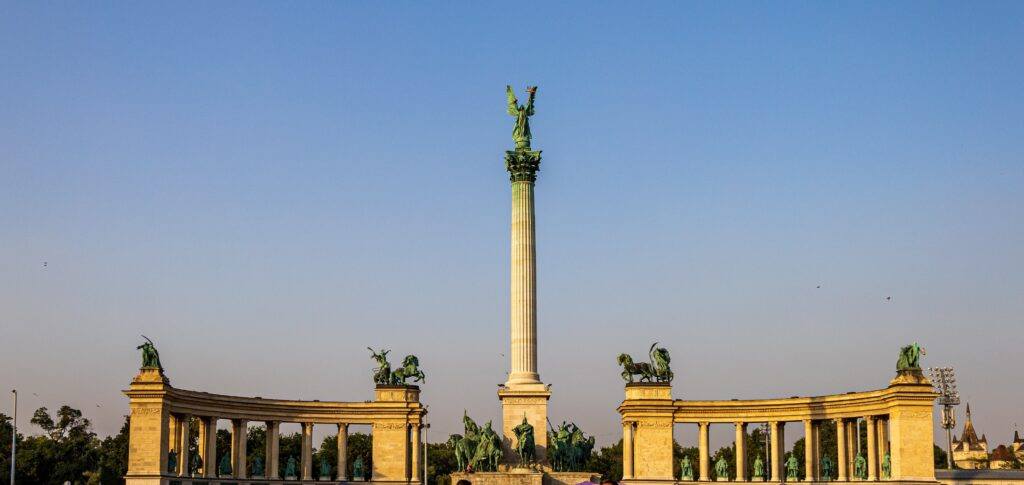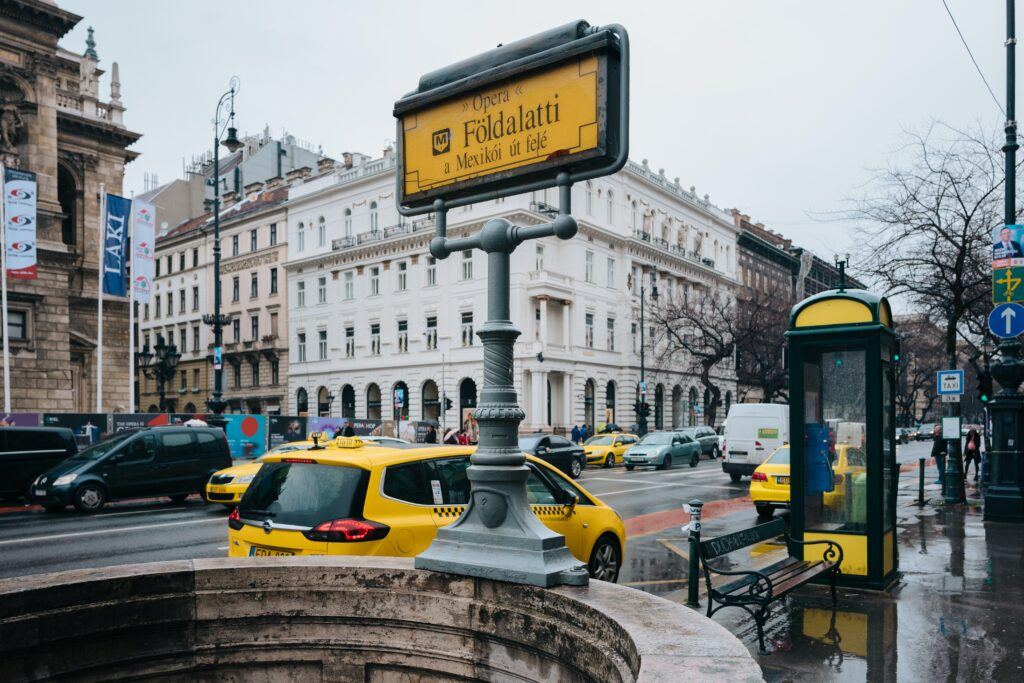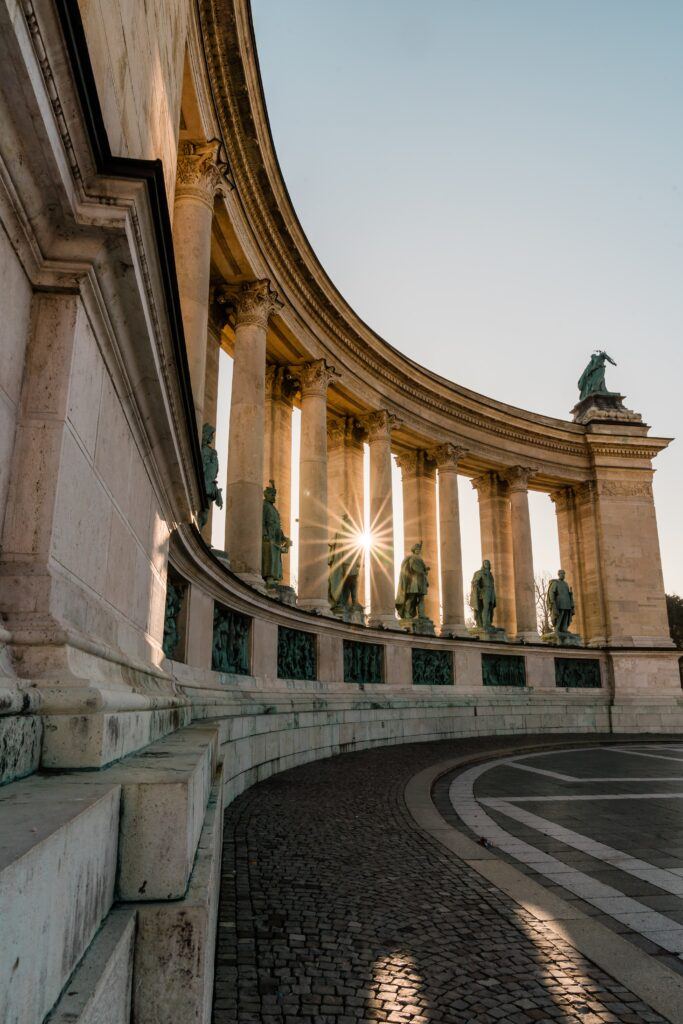Over the years, Budapest’s legendary Andrássy Avenue filled with palaces, villas, and hotels, has become one of the symbols of the capital. Andrássy Avenue, along with the Millennium Underground and Heroes’ Square at its end was classified as a World Heritage Site in 2002.

The Millennium Underground is unique in a way, that it was the first metro line on the European continent. It was built for the Millennium celebrations in 1896 and the surface stations were originally covered with Zsolnay tiles.


At the end of Andrassy Avenue, you arrive at Heroes’ Square, the largest and probably most symbolic square in Budapest. The square was designed in 1896 in memory of the 1000th anniversary of the Hungarian conquest of the Carpathian Basin.
The two rows of columns feature 14 emblematic figures of Hungarian history, surrounded by the seven original Hungarian leaders, headed by Grand Prince Árpád. The central column is crowned with Archangel Gabriel’s statue.
Two major cultural and artistic institutions are located on either side of the square: the Museum of Fine Arts, fully renovated and reopened in 2018, and the Kunsthalle, which hosts mainly temporary exhibitions of contemporary art.

